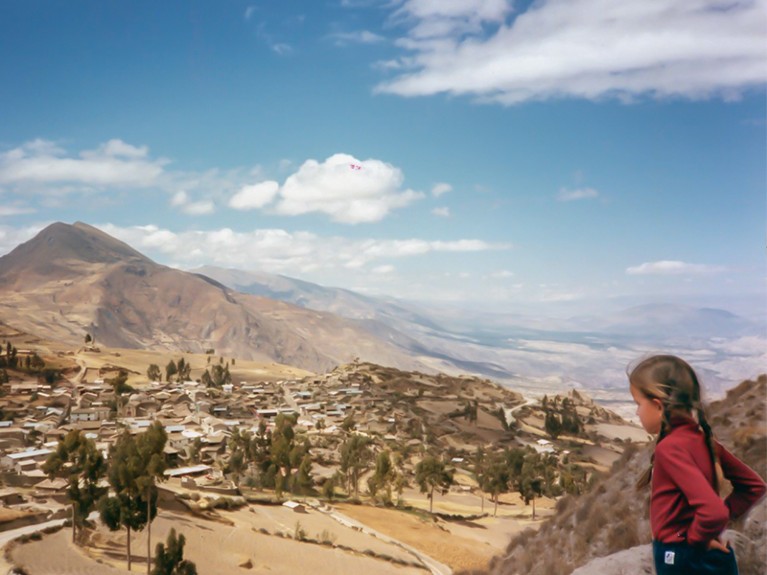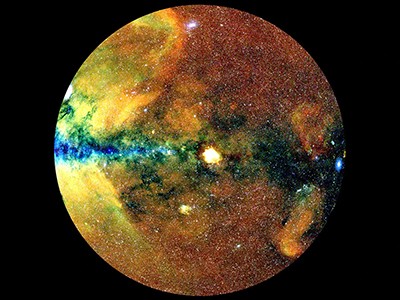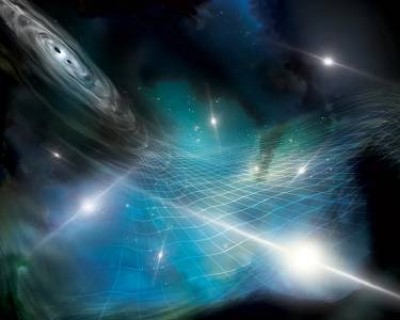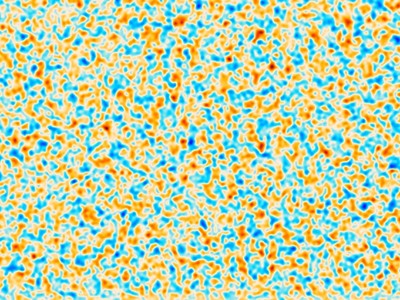[ad_1]
The Beauty Of Falling: A Life In Pursuit Of Gravity Claudia de Rham Princeton Univ. Press (2024)
Swiss cosmologist Claudia de Rham is best known for co-developing a theory of gravity that tweaks Albert Einstein’s general theory of relativity. It could help to explain why, for the past several billion years, the Universe has been expanding at an ever faster pace — a ‘late-time’ acceleration that is usually ascribed to a mysterious force called dark energy.
For de Rham, who also spent more than two decades training to be an astronaut and is now at Imperial College London, gravity is the key to understanding both the Universe and the arc of her own life. In her book, The Beauty of Falling, she weaves together physics and memoir in a meditation on gravity as a metaphor for human existence.
De Rham talked to Nature about the beauty of failing and how her dream of flying into space led to her research making sense of gravity.
Why did you want to write this book?
Part of it is sharing. From an external point of view, what we do as theoretical physicists seems a little bit alien. We often just share our successes, and people have this picture of us as individual geniuses who make out-of-the-blue discoveries. The reality is that it is very much team-based, and fun.
This new map of the Universe suggests dark matter shaped the cosmos
Every day, I try out an idea and it fails. And there’s something beautiful in failing, and falling. The book is about gravity, but it is also about embracing this falling, because it’s how we get better — it’s how we understand the world. With gravity, failing has an even deeper meaning. The way that we describe gravity at the moment is with Einstein’s general theory of relativity, which predicts its own downfall.
How so?
If you have a gravitational collapse of matter, the endpoint will be in a black hole, with a singularity at its centre. The singularity means that, if you agree with Einstein’s theory, some quantities you can measure would be infinite. What that really means is that the theory has stopped working there, and it gives a prediction that doesn’t make any sense. So the theory itself is telling you that you shouldn’t trust it any more. And that is not something to be ashamed of. It is an opportunity to learn something more.
In the book, you describe how, as a child, you had a sudden realization. What was it?
The “wow!” moment I had as a kid was when my family and I travelled in Peru, first to Iquitos and then the Amazonian forest. I must have been four years old. At some point, we were staying in hammocks, and as I was swinging there, just staring at the stars through the trees — some of which were a thousand years old, and so tall — I almost had a feeling of weightlessness.
My mother always tells me that I said “now I know I want to belong there, I want to be in the sky”. It wasn’t phrased as “I want to become an astronaut”, but in terms of “I want to belong to this greater thing”.

At the age of four, traveling in Peru, Claudia de Rham realized she wanted to go to space.Credit: Ellen de Rham
This did turn into a dream of becoming an astronaut. This is notoriously difficult, and the European Space Agency (ESA) has held only three recruitments since 1978. How close did you get to being selected?
For ten years, I waited for the ESA astronaut selection. Then finally, in 2008, the announcement came. There were some pre-selection processes, then different batches of psychological and psychometric tests. You were also tested on how you behave in a team, how you work with others and how you react to stressful situations. More than 8,000 people submitted an application with all the required documents. By the end, only 42 were left to go through medical tests.
Giant gravitational waves: why scientists are so excited
I was in a group with six others in Toulouse, France, in a medical centre for a full week of non-stop tests, one after the other, through every single hole of your body. And at the end of the week, I had a meeting with the chief doctor. Everything seemed well, he said; we are just missing the tuberculosis (TB) test. I was laughing — I said, ”Clearly I don’t have TB, it’s going to be fine.“
I went to the airport to catch my flight back to Canada, where I was living at the time. Just when I was boarding the plane, I saw an e-mail from the doctor. The TB test had come up positive.
I had been training for 20–25 years. I had never thought I would get so close. I had big dreams, but I was always very realistic: I knew that the chances would be very small, and I had set up a whole other career path just in case. But when I talked to the doctor, it was the first time I thought, “This really can happen.”
Your ‘fallback’ career is itself very selective.
Being a theoretical physicist is not exactly something you just fall into because you can’t think of doing anything else. It required a lot of work. But I think it wasn’t as high-pressure for me as it might’ve been for others who had always thought that that’s what they wanted to be.
And yet here you are. What drew you to study gravity?
Initially, I was much more interested in higher dimensions, and why we seem to experience three dimensions of space. There could be more, and if so, there must be some phenomenon that explains why we experience only three. One of the questions I was trying to understand was how a particular model with extra dimensions could be related to the late-time acceleration of the Universe.
Mystery over Universe’s expansion deepens with fresh data
And the model, I realized at the time, did manifest some features which — from our three-dimensional point of view — looked like massive gravity. ‘Massive gravity’ is a theory that states that the fundamental particle that carries the gravitational force, called the graviton, has an inertial mass.
In general relativity, the graviton is massless, similar to the photon, the particle responsible for electromagnetic waves. And when the fundamental particle carrying a force is massless, the force has infinite range, so can propagate across the entire Universe.
What sort of mass are we talking about?
The graviton shouldn’t be very massive, because otherwise we wouldn’t even experience gravity. But we do feel gravity on Earth, and it can be detected in the Solar System, in our Galaxy and in clusters of galaxies — so the range of gravity should be larger than that. If you translate this distance scale to energy units, that corresponds to roughly 10−32 electronvolts (eV). [That is 38 orders of magnitude lighter than an electron.]
Can the massive graviton be tested experimentally?
Yes. Current observations in gravity and cosmology already put constraints on it. For instance, observations of gravitational waves mean that the graviton’s mass must be less than 10−22 eV. If the graviton had a larger mass than that, then the speed of propagation for gravitational waves of different frequencies would be slightly different, and the signals we have seen would have been slightly different. It’s not a huge effect, but enough to put a constraint.
However, perhaps the best way to probe that in the future would be to detect gravitational waves with much longer wavelengths than those now known.
[ad_2]
Source Article Link




